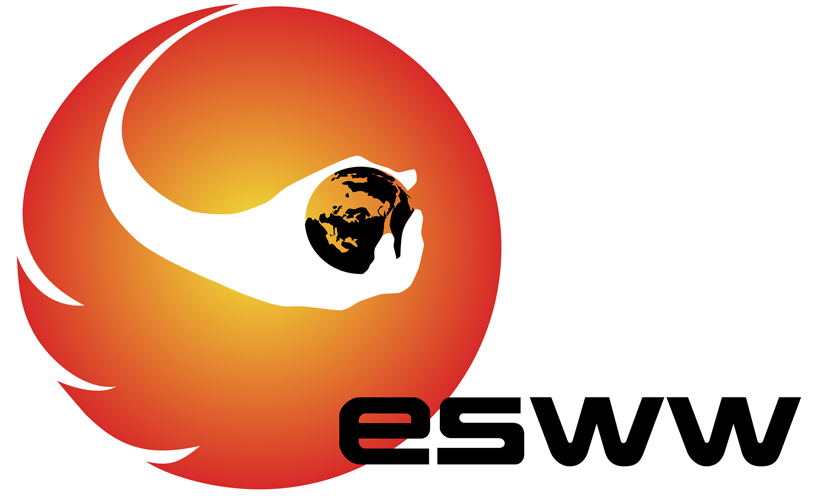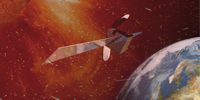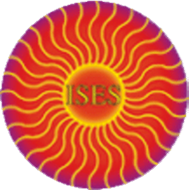
15-19 November, 2010 - Brugge, Belgium
Tracking Heliospheric Phenomena: New Observing and Analysis Strategies
| Session: | Session 3 Tracking Heliospheric Phenomena: New Observing and Analysis Strategies (03) |
| Type: | Oral presentation |
| Date: | Wednesday, November 17, 2010 |
| Time: | 09:00 - 12:30 |
| Chair: | David Berghmans & Robert Walsh |
| Co-chair: | |
| Remarks: | Coffee break: 10:30 - 11:00hrs |
| Seq | Time | Title | Abs No | ||||
| 1 | 09:00 |
AIA Observations of CMEs
Golub, Leon Harvard-Smithsonian Center for Astrophysics, UNITED STATES The AIA instruments on SDO are well suited to observing the origins of CMEs as they leave the low corona. The eight wavelength channels together observe a large range of temperatures, from photospheric to active region and flare values, <10^4 K to >10^7 K. AIA observations are continual with a regular cadence of ~10 sec, and observe the full Sun. Therefore all target regions are always being observed. The data quality allows for processing via difference images and a special "coronagraph" mode, both highly useful for CME detection and tracking. We will present a sample of such observations from AIA and discuss their use in space weather event detection. |
|||||
| 2 | 09:20 |
The Emerging Informatics Infrastructure for Heliophysics
Ireland, Jack ADNET Systems, Inc./NASA GSFC, UNITED STATES The Sun, interplanetary space, and the Earth's magnetosphere and atmosphere are often studied as separate domains of interest. This naturally leads to domain-specific solutions to the problems of data acquisition, storage, distribution, visualization and analysis. However, many important questions in heliophysics cannot be answered by considering each part of the heliosphere in isolation: rather, data from many separate heterogeneous observations must be combined and understood in the context of a single integrated heliophysical system. The heliophysics community therefore requires tools to access, visualize, and analyze the requisite data from across the heliosphere. Such tools are becoming ever more important in heliophysics as data complexity and volume increase. In this talk I will review some of the existing and developing tools that allow users to access, visualize and analyze data and information from multiple heliophysical observations. I will also comment on how these tools constitute an emerging informatics infrastructure for heliophysics, and make some suggestions on how this infrastructure may be developed to best serve our need to understand the physics of heliosphere. |
|||||
| 3 | 09:40 |
A Three-Dimensional SWAP-STEREO Reconstruction of a Mass-Loading Type Eruption
Seaton, Daniel; Mierla, Marilena; Berghmans, David; Dolla, Laurent; Zhukov, Andrei Royal Observatory of Belgium, BELGIUM On 3 April 2010 an eruptive flare (GOES class B7.4) near sun center triggered a geoeffective CME that has been blamed for the failure of the Galaxy 15 telecommunications satellite. Here we present a three-dimensional reconstruction of this eruption using observations from SWAP onboard PROBA2 and SECCHI onboard STEREO. PROBA2 is an ESA spacecraft with four space weather monitoring instruments including SWAP, the EUV coronal imager from which many of these observations were obtained. Our analysis of this event shows that it unfolded in two parts: an initial flow of cooler material from very low in the corona, followed by a flux rope eruption higher in the corona. We conclude that mass off-loading from the first part triggered a rise, and, subsequently, catastrophic loss of equilibrium of the flux rope. We discuss the implications of this analysis on CME and flare initiation models and additional possibilities for joint operations using PROBA2 and other space based observatories like Hinode, SDO, and STEREO. |
|||||
| 4 | 10:00 |
Current and Planned Observational and Modeling Capabilities at the NOAA Space Weather Prediction Center
Onsager, Terry; Viereck, Rodney NOAA Space Weather Prediction Center, UNITED STATES Reliable and continuous observations of the space environment are critical for specifying the current state of the space environment and for driving predictive models. Some of these critical observations come from NOAA weather satellites while others come from NASA and ESA spacecraft and from a network of ground-based instruments. Increasingly our forecasts of space weather are based on physics-based and empirical models, all of which require extensive data for model development, validation, and execution. These data and models form the basis for the alerts, watches, warnings, and a variety of products and services that our Forecast Office provides to customers and users affected by space weather. In this presentation, we will provide an update on our current modeling and observational activities as well as plans for improving our products and services and expanding our observing and modeling capabilities. |
|||||
|
10:20 Questions / discussion |
|||||||
| 5 | 11:00 |
Coronal Holes and High-Speed Solar Wind Streams
Krista, Larisza; Gallagher, Peter Trinity College Dublin, IRELAND Coronal holes are the source of high speed solar wind streams in interplanetary space, and can therefore cause adverse space weather at Earth. Despite much study, it is still unclear how the properties of coronal holes, such as position and area, relate to high speed speed solar wind stream arrival times and durations at 1AU. Here we report a new image processing technique which automatically identifies and tracks coronal holes in EUV and X-ray images, enabling us to make a detailed comparison between coronal holes and solar wind flows at Earth. Using a large sample of observations over cycle 23, we show that high-speed solar wind arrival times are directly correlated with the west-most longitude of a coronal hole's boundary and that the duration of solar wind stream at Earth depends on the longitudinal extent and area of coronal holes. |
|||||
| 6 | 11:15 |
Fine Structure of the Solar Inner Corona and its Relationship with Coronal Streams
Slemzin, Vladimir1; Urnov, Alexander1; Kuzin, Sergey1; Harra, Louise2; Berghmans, David3; Goryaev, Farid3 1P.N. Lebedev Physical Institute, RUSSIAN FEDERATION; 2UCL-MSSL, UNITED KINGDOM; 3Royal Observatory of Belgium, BELGIUM The inner solar corona (R=1 ÷ 2Rsun) plays an important role as the intermediate region where the restructuring of the magnetic field from closed to open configurations and the formation of the solar wind streams takes place. Ulysses' results showed the global map of the solar wind and stimulated searches of the solar wind sources. However, most of existing EUV telescopes, such as SOHO/EIT, STEREO/EUVI, SDO/AIA cannot see the corona above R=1.3Rsun. So far, investigations of coronal streams were limited to white-light coronagraphic studies of the streamers at the distances above R=2 Rsun. The first EUV observations of the inner corona up to 2.5 Rsun were obtained with the CORONAS-F/SPIRIT telescope-coronagraph during the last solar maximum (2001-2002) and revealed the existence of quasi-stationary ray-like structures stretching from active regions to white-light streamers. Recently HINODE/EIS has detected the Doppler shifts of the coronal emission lines produced by the coronal outflows at the edges of ARs. New EUV telescopes such as TESIS aboard CORONAS-Photon and SWAP aboard PROBA2 have extended field of views which fill the existing gap and allows us to study the relationship between the EUV coronal rays and outflows detected by HINODE/EIS. This report presents preliminary results of observations of the inner corona with new EUV telescopes - CORONAS/TESIS and PROBA2/SWAP along with the plasma diagnostics using the simultaneous Hinode/EIS data in the current period of extremely low solar activity 2009-2010. It was found that there is a correspondence between the maps of the EUV line intensities, temperature profiles of column DEMs and stream velocities obtained by EIS at the disk center and the fine structure of the corona observed by EUV telescopes above the limb. For the cases under study a comparison is made with the ACE data to verify the assumption that these coronal streams represent components of the solar wind. |
|||||
| 7 | 11:30 |
New Models and Observational Strategies for reconstructing the Solar Spectral Irradiance for Space Weather Applications
Cessateur, Gaël1; Dudok de Wit, Thierry1; Kretzschmar, Matthieu1; Vieira, Luis Eduardo1; Lilensten, Jean2 1LPC2E, University of Orléans, FRANCE; 2LPG, University of Grenoble, FRANCE The knowledge of the solar spectral irradiance in the UV and its variation in time is a key problem in aeronomy but also in climatology and in solar physics. While the Extreme UV (10-121 nm) range is important for thermosphere/ionosphere specification, the Far UV and Middle UV ranges are essential for climate modeling. However, the continuous monitoring of the UV irradiance is a difficult task. Space instruments are indeed suffering from ageing but also signal contamination of many kinds. Because of the lack of long-term measurements of the whole UV range, most thermosphere/ionosphere and climate models rely today on proxies for the solar irradiance. Empirical models are more usually preferred since reconstructions based on model atmosphere fail in the EUV/FUV ranges because of the local thermodynamic equilibrium approximation. The purpose of this work is to review the instruments and models that are available today for the specification of the solar spectral UV irradiance. A short description of the available data resources will be given, followed by a review of the empirical models that are of interest to the space weather community. Finally, future observation and reconstruction strategies for the solar spectral UV irradiance will be presented. |
|||||
| 8 | 11:45 |
Temporal and Frequency Variations of Flares observed by LYRA Onboard of PROBA2.
Zender, J.1; Foing, B.1; Vagg, D.2; Dominique, M.3; Dammasch, I.3; Schmutz, W.4 1ESA/ESTEC/SRE, NETHERLANDS; 2Waterford University, IRELAND; 3Royal Observatory of Belgium, BELGIUM; 4 Physikalisch-Meteorologisches Observatorium Davos, SWITZERLAND The radiometric data obtained onboard of PROBA2 using the LYRA channels in the EUV and Soft-Xray are analyzed and compared against other space weather data, i.e. the SWAP imager onboard of PROBA2 satellite and the x-ray detectors onboard of the GOES-14 satellite. A temporal analysis quantifies the variations during the flare event. The rise and decay time and the flux changes are discussed for the different bands. We introduce the wavelet methodology and present the results for flare analysis applied to the LYRA channels using this method. |
|||||
| 9 | 12:00 |
Tracking CMEs from Sun to Earth
Temmer, Manuela1; Möstl, Christian2; Rollett, Tanja1; Veronig, Astrid1; Flor, Olga1 1Institute of Physics, University of Graz, AUSTRIA; 2Space Research Institute, Austrian Academy of Sciences, Graz, AUSTRIA STEREO is composed of two nearly identical spacecrafts, one ahead of Earth in its orbit (STEREO-A), the other trailing behind (STEREO-B). This unprecedented mission observes CMEs simultaneously from two different vantage points, from which new insights into the 3D aspects of CMEs are derived. With the SECCHI instrument suite aboard STEREO the distance range from Sun to Earth is covered. This enables us to track CMEs seamlessly from Sun to 1AU where they can be related to in-situ plasma and magnetic field measurements. We present on the basis of triangulation techniques and fitting methods results on the determination of the CME/ICME propagation direction using observations from the coronagraphs and heliospheric imager instruments aboard STEREO. |
|||||
| 10 | 12:15 |
Can a Halo CME from the Limb be Geoeffective?
Cid, Consuelo University of Alcala, SPAIN The probability of a Halo Coronal Mass Ejection (CME) being geoeffective is assumed to be higher the closer is the CME site to the central meridian. Events far from central meridian have shown to produce a severe geomagnetic storm, as for the events on April 2000 and in November 2003. In this work we study the effectiveness of halo CMEs coming from the limb to asses the possibility that they are associated or not with geomagnetic storms. We have selected the 14 limb halo CMEs occurred during the 23rd Solar Cycle. We search whether they are geoeffective or not by looking several geomagnetic indices. For those geoeffective events we analyze the solar and interplanetary data to check the association between the geomagnetic storm and the halo CME. We have organized these events into three sets considering their interplanetary signatures. The first set includes those events where no signature of a CME-driven shock or ejecta. The second set considers those cases where an interplanetary shock is observed and finally the third set includes those where the interplanetary counterpart of a CME is detected. We have checked wether any interplanetary signature is associated with the selected limb halo CME and otherwise we have looked for other possible solar sources. Our results suggest that the limb halo CMEs of 23rd Solar Cycle are not geoeffective. We conclude that it is absolutely necessary to check not only solar and geomagnetic data, but also interplanetary and particle data in other to establish a reliable association between the geomagnetic storm and a solar source. In our study we found one partial halo CME from the western limb was geoeffective. This indicates that CMEs from the limb may be geoeffective, and hence limb CMEs should remain considered for space weather forecast. |
|||||







